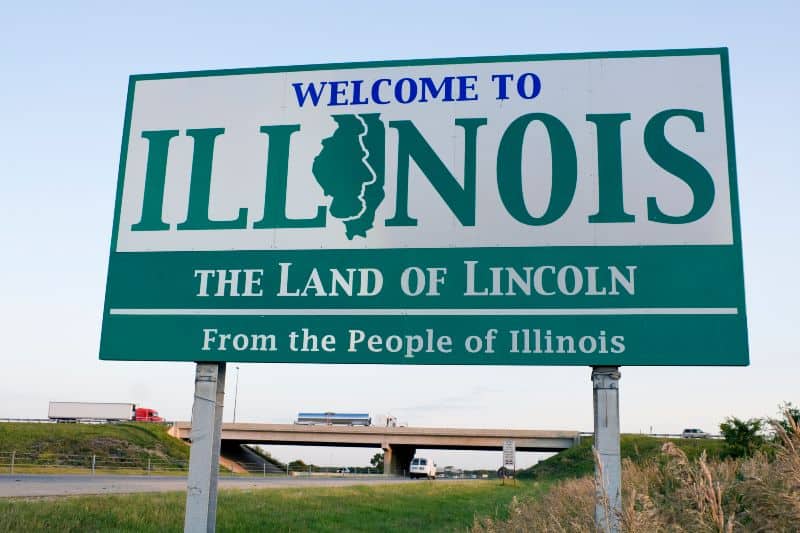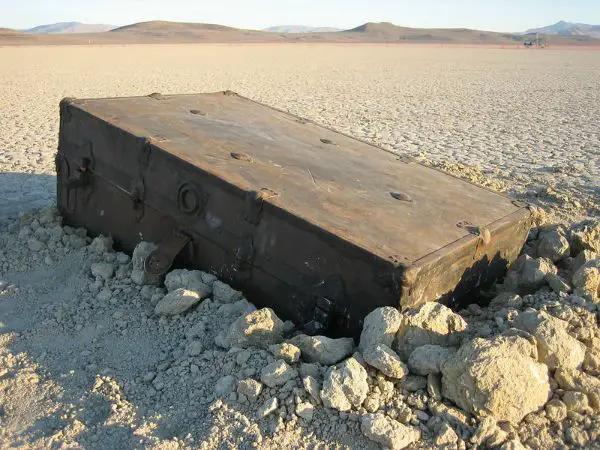
Ohio is famously called the Buckeye State, owing to the sheer number of Buckeye trees growing in the state. Ohio has many lost and hidden treasures that are waiting to be discovered.
From a lost French payroll of the 1750s to a train wreck and $2 million in lost gold, there are many lucrative stories of hidden treasure said to be buried in Ohio.
Quick Recommendation for treasure hunters: There are so many ways and tools that can help you find treasures. The tool that I actually recommend is using a Metal Detector. Indeed, while there so many expensive models out there costing 1000s of dollars, I still recommend using a mid-level machine that should not cost you that much. In fact, if you don’t have a big budget, I recommend using this quality metal detector that should be affordable for most average hobbyists out there. It has more than enough features you will need to find most treasures buried in the ground.
Without further ado, here are some of the most popular tales of lost treasures in Ohio …
1. Buried chest of silver

According to an article appearing in the Fairmount Newspaper dating back to September 28, 1899, a man named H. B. Merrill was working on the roof of his house when he came across an old leather pocketbook hidden in the rafters of the roof.
This pocketbook is believed to have contained a letter that stated that a chest worth $4,500 in silver was buried in an orchard at someplace on the farm.
The farm, which the Merrill family-owned for several years, was just seven miles south of Painesville in Ohio. It is said that the Merrill family owned many other farms in the Concord Township and Chardon Township, which are also both located within seven miles of Painesville.
As per the stories, this chest of silver was never recovered and is said to be still buried in an orchard in either of the Merrill’s land in the Concord Township in Lake County or at the Chardon Township in Geauga County in Ohio.
If the chest full of silver is really out there, it is estimated to be worth about $140,000 today. However, bear in mind that it is quite possible that the orchard itself is long gone by now. But if you can do some research into the Merrill family and the area in general, you might be able to narrow down the area and get lucky.
2. Treasure of the Pacific Express Train Wreck in Ashtabula
A terrible train disaster took place on December 29, 1876. The Pacific Express train, owned by The Lake Shore and Michigan Southern Railways, plunged into the Ashtabula River.
The accident happened close to Ashtabula in Ohio. The night the accident took place was freezing, and there were crazy winds blowing combined with snow. It was an all-out blizzard at hand when the train plunged into the river.
When the train crashed through the snow through the Ashtabula Bridge that sits over the river and plunged 75 feet into the river gorge below, the bridge quickly gave way and also came crashing into the river.
The 11 cars two engine train quickly burst into flames, leading to the death of many passengers. It is said that the crash could be heard from miles away.
The passengers who did not perish from the fire ended up freezing or drowning because of the cold temperatures and icy water. Overall, 90 of the 159 passengers and crew were killed in the crash.
Stories tell that one of the cars of the Pacific Express was carrying $2 million in gold bullion when it plunged into the river.
If the gold is still there, it is likely to be buried under a century’s worth of mud, which would make it very challenging to find. However, if you have a good quality underwater metal detector, you might get lucky.
3. Vermilion Ship Wreck Treasure

A ship that went down in Lake Erie in the 19th century is believed to have been carrying gold and silver coins. Vermilion is located on route 6, and there have been stories that several gold and silver coins have been found on the beaches near Vermilion.
While it is a good idea to search the beach, but it will be helpful if you have an underwater metal detector to comb through the lake waters.
4. Treasure of Locust Point
Located just 15 miles east of Toledo, a British warship is known to have sunk at Locust Point. It is said that the warship was carrying 100,000 sterling in gold and silver coins.
The survivors from the shipwreck buried this treasure onshore. A couple of weeks later, they came back to retrieve the cache, but they were unable to locate it since heavy snowfall had taken place and the area was entirely covered with snow. The treasure remains lost to this day.
5. Treasure on Isle St. George

Located just 15 miles north of Sandusky in Lake Erie sits the island of St. George. During the Indian and French War, a French army officer buried a large treasure on this island that was stolen from the local residents.
The exact location is not known, but it is believed to be somewhere on the island itself. A little bit of research on the history of this area and the war may help you narrow down on the exact location.
6. The Lost Tale of the French Payroll
In 1755, the French laid claim to the area northwest of the Ohio River and called it New France. The British, together with some Indians, were determined to capture some of this land, and Major General Edward Braddock of the British army was sent along with troops and Indians to capture Fort Duquesne from the French.
Expecting this, the French decided to send ten men and a train of horses with the French Military Payroll to Fort Detroit. They traveled through the Great Trail, which was a network of footpaths that the Indians had built before the arrival of the Europeans. The French troops made it as far as what is today known as Minerva in Ohio.
Lookout scouts of the French informed the troops that the British were gaining on them. This was when they decided to bury the gold.
Soon afterward, though, the British attacked the ten Frenchmen, with only two of them getting out alive. The two French soldiers placed several markers in the area to help identify where they had buried the gold. But, soon, the British took control of the entire area around Minerva, and the French were not able to retrieve their treasure.
One of the surviving soldiers wrote the details of where they hid the treasure in a letter. The solder stated that the buried treasure could be found one mile east of a tree that had a carving of a deer on it, and a stone was placed in the fork of a tree that was 11 feet up a spring one-half mile west.
He also mentioned that the shovels that they used were buried 600 steps north under a large log.
Years went by, and according to reports and a newspaper article written on April 3, 1876, the soldier’s nephew had this letter and was determined to find the buried treasure. But with no luck, the nephew went back and never returned.
In the years that followed, several of these markers that were mentioned in the letter were found, as were the shovels, but the treasure was never found. The lost gold and silver payroll is today estimated to be worth nearly $13 million.
Treasure hunters have been regularly searching for this treasure for nearly 250 years now, and every year, you will find treasure hunters detecting in the area around Minerva.
7. Hidden treasures of ex-pirate John Baldwin

John Baldwin was believed to be a member of the infamous Jean Lafitte’s pirate crew. In 1818, after Baldwin was pardoned for being a pirate, he constructed a barn, a brick inn, and a tavern near Lancaster in Ohio. He also built the first horse track in Fairfield County in 1825.
It is said that Baldwin would only accept gold coins for his business transactions, due to which he accumulated a huge amount of money from his tavern, inn, and horse track. It was also a well-known fact that he would bury most of his earnings in and around his property.
When Baldwin died in 1840, several treasure hunters continued to find many of his caches in the years that followed, including a gold cache found inside a hollowed-out stone in the barn, as well as gold in the attic. Baldwin’s entire property is spread out over 176 acres of land, and treasure hunters have dug up most of it over the years.
According to legend, Baldwin buried a lot of earnings around the inn and tavern as well. So if you want to go detecting for some of his treasure, you should check out his property near Lancaster, on the northeast corner of Pleasantville Road and Marietta Road in Fairfield County.
8. Buried treasure of John Dillinger on the Pierpont Farm

Who doesn’t know about John Dillinger, the most famous American criminal who was one of the most famous bank robbers in the history of the US? Dillinger, along with his gang Harry “Pete” Pierpont, Fat Charles Makley, and Russell Clark, robbed between 10 and 20 banks in Northwestern Ohio during the summer of 1933. They would frequently hideout at Pierpont’s farm, which was located near Leipsic in Ohio.
It is believed that after one of their bank heists, the gang drove back to the Pierpont farm, the police pursuing them. They quickly buried the loot somewhere on the seven acres of woods that were on and around the farm, driving away equally quickly after burying.
A year later, in 1934, Dillinger was shot down by the FBI in Chicago. Soon the rest of the gang was also killed or arrested. As per the stories, the FBI continued to watch over the farm for months, but none of the surviving gang members ever returned to recover the stolen loot. Neither has it ever been recovered by anybody else.
9. Buried treasure of Daniel Brown
Another famous lost treasure story from Ohio revolves around Daniel Brown, who was a professional counterfeiter who lived from 1820 to 1851. It is believed that Brown made a huge amount of money through counterfeiting
In 1850, Brown went to California and sold between $80,000 and $100,000 in counterfeit bills to gold miners in exchange for gold dust, gold nuggets, and gold coins.
On his way back from California, he contracted scurvy. Daniel died on January 21, 1851, before the police could catch him.
It was said that he was only carrying $20,000 on him at the time of his death, leading people to wonder where the rest of his treasure went.
It is rumored that he buried the rest of the gold that he brought back from California somewhere on his farm that was located along the Cuyahoga River near Cuyahoga Falls in Ohio. The treasure remains undiscovered even today.
10. Riverboat Pirates and their Treasure
It is said that riverboat pirates might have hidden nearly $24,000 in gold and silver coins along with precious jewelry on a bluff overlooking the Ohio River.
This treasure was stolen from a riverboat in 1876, and the bluff was frequently used as a hideout for pirates. This place is rumored to be located just one mile northwest of Crown City.
11. Treasure on the Lisman Farm
The Lisman Farm is located around two miles east of Joy. It is believed that the farm may hold a treasure worth $125,000 in paper currency.
This loot was stolen from a bank in 1924. Today, if found in the proper condition, this treasure could be worth billions.
12. Revolutionary War Treasure
There are stories of a revolutionary war treasure worth over $25,000 in gold coins that might be buried on the northern shore of the Sandy River. The spot is said to be located around one mile south of Minerva in Ohio.
13. Treasure on the John Ashland Farm
The John Ashland farm is located very close to Wyandot. It is said to still hold a treasure from the Revolutionary War worth $25,000 in gold coins.
This treasure was supposedly buried on the southern shore of the Sandusky River near Wyandot.
14. The Grand River Treasure
Legend has it that the Grand River might still hold a treasure that is valued at nearly $100,000 in gold bars. This gold was stolen from a bank.
At the time of his death, the robber who stole the gold accounted that the gold was buried three feet deep and 30 paces northwest of a large oak tree on the river bank.
It is believed that this cache is buried on the western shore, just two miles from Lake Erie near Fairport Harbor.
15. Andrew Meyers and Napoleon’s Lost Treasure
In the early 19th century, Andrew Meyer, his brother Francis, and the rest of the Meyer family arrived in Baltimore, Maryland.
They were a wealthy family, and the brothers Andrew and Francis had both fought in the Napolean Wars. In fact, Francis was given the authority to watch over Napoleon Bonaparte’s material possessions.
He was appointed a security guard charged with looking after a trunk that contained currency, gold, and several important war papers of Napoleon.
Because of his loyalty to Napolean, he was often gifted many expensive things, including a sword with diamonds in the handle and a diamond-studded insignia. Napoleon also awarded Francis with the Legion of Honor.
Andrew was also very wealthy indeed, and after arriving in Baltimore, he set off to explore the territory around Ohio. He even owned two ships that he let the US Army use during the War of 1812. For this, he granted land rights in Stark County, Ohio.
After spending many years as a successful businessman in Canton, Ohio, Andrew purchased more land, amassing in total around 2,500 acres of land. He also purchased Well’s Lake, which was later renamed Meyer’s Lake.
He began the construction of a 17-room mansion, which was finally finished in 1822. The mansion was indeed a sight to behold in Ohio in those days.
As stories go, Andrew was said to have owned a chest that was encrusted with jewels. Some believe this was Napoleon Bonapartes War Chest that his brother had watched over when they were a part of Bonaparte’s Army.
Before Andrew died in 1848, some neighbors claim that they saw him sink a copper boat in his lake. His neighbor swore he saw Andrew bury gold and rubies near the mansion.
And yet others claimed that Andrew, carrying a shovel, would frequently be digging holes along the waterfront of his lake.
So after Andrew’s death, word got out of these buried treasures, and treasure seekers from all around the area descended onto Andrew’s property looking for treasure. However, to this day, no treasure has been found.
Final Thoughts
Hopefully those lost treasures in the state of Illinois would get you excited to start your adventure to find treasures yourself, whether in Illinois or any other state.
If you are aware of any other lost treasure in Illinois or you’ve got any story you want to share, let me know so I can feature it in this article.
